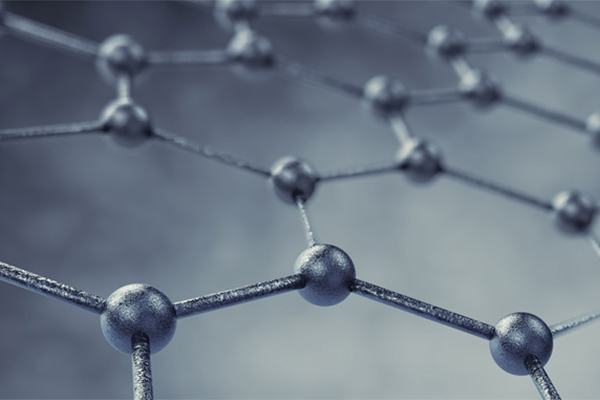Researchers from the Graphene Flagship, working at the Istituto Italiano di Tecnologia (IIT) and the University of Rome Tor Vergata, have significantly enhanced the stability of perovskite solar cells (PSCs) by including few-layer molybdenum disulphide (MoS2) flakes as an active buffer layer in the cell design. These PSCs retain 93% of the initial light conversion efficiency after 550 h, compared to only 66% for cells without the MoS2 buffer layer. This represents an important step towards viable PSCs, especially as the addition of the MoS2 interface layer is compatible with low-cost solution processing techniques.
MoS2 is a semiconductor material that has a layered structure, and can be exfoliated into few-layer flakes. In this research, 200-600 nm wide flakes of few-layer MoS2 were added into the solar cell device as a buffer layer in between the photoactive perovskite and hole-collecting layers, delivering high stability and increased photovoltaic performance. Published in Advanced Energy Materials Volume 6 Issue 16, this research exemplifies the use of layered materials in interface engineering to boost performance of stacked heterostructure devices.
The unprecedented growth in energy usage in recent years, as well as the environmental issues arising from the use of more traditional power generation sources, means that finding highly efficient, environmentally friendly methods of generating and storing energy is of paramount importance. “The Graphene Flagship is investing significantly in the development of technologies based on graphene and layered crystals for both energy conversion and storage,” says Dr Vittorio Pellegrini (IIT), Chair of the Graphene Flagship Executive Board, and co-author of the article. “This work is a further demonstration of the great potential of layered materials for next-generation organic photovoltaic cells,” he adds.
Currently, solar power is an important energy source, due to the abundance of available solar energy, its low environmental impact and its cheap running costs. Dr Gerard Gebel (French Alternative Energies and Atomic Energy Commission), who heads the Flagship Division on Energy, Composites and Production as well as Work Package 11 — Energy Generation, describes the objectives of the Graphene Flagship for development of energy technologies based on layered materials: “The Work Package Energy Generation aims to demonstrate the advantages of the use of graphene and related layered materials in terms of performance, lifetime and cost reduction in fuel cell and photovoltaic systems. The key challenge is to gain sufficient improvements to compensate additional costs, as fuel cells and solar cells are mature technologies.” These next-generation solar technologies must be significantly improved before they can replace commercial silicon-based solar cells.
“Perovskite solar cells have demonstrated great promise for high performance and high efficiency in just a few years of research. However, the stability of such photovoltaic devices has to be tackled if this technology is to be commercialized in the near future,” says Dr Francesco Bonaccorso (IIT), co-author of this research, explaining the motivation behind the study. “The exploitation of layered crystals could be a valuable route to boost both the efficiency and the stability of PSCs.”
For clean energy technologies, high efficiency, low cost and long device lifetime are important considerations for commercialisation and wide adoption. Perovskite materials are promising for use in solar cells, due to their high photoactivity and light-power conversion efficiency. Unfortunately, the performance efficiency degrades sharply during operation and storage, which is currently the main barrier to bringing perovskite-based solar technologies to market. This research indicates that this barrier could be overcome by careful integration of layered materials into the solar cells, optimising the interfaces between the active device layers to produce highly stable, high efficiency PSCs.
Importantly, the addition of the MoS2 buffer layer is compatible with the solution processing printing and spray-coating techniques used to fabricate the layered solar cell devices. The spray-coating of the MoS2 flakes does not add complex fabrication steps to the PSC production; for large-scale commercial applications, ease of fabrication is important in order to keep costs down. The spray-coating method is also directly compatible with large area fabrication, which is crucial for a viable and scalable clean energy technology. The 1.05 cm2 cells demonstrated in the article show that the high stability solar cells can also be fabricated in large area formats, a must for real-world application.
The MoS2 buffer layer acts in two ways to keep the high solar conversion efficiency stable over time. Firstly, the MoS2 provides an effective interface between the perovskite and the hole transporting layer, due to its high hole mobility and good energy matching with the perovskite. This leads to the high initial efficiency of the cell, by reducing recombination of the electrons and holes that are generated by light conversion in the perovskite. Secondly, the MoS2 buffer prolongs the life of the perovskite layer by preventing degradation and ion migration from the electrode. This also protects against direct electrical contact with the gold electrode which collects the photocurrent, ensuring that the high efficiency is maintained over time.
This research points towards excellent opportunities for using layered materials to boost performance for renewable energy generation. By increasing the stability and usable lifetime of perovskites, the goal of viable PSCs is a step closer. Prof. Aldo Di Carlo (University of Rome Tor Vergata), who also co-authored the research, is looking forward to the improvements to come from this approach: “Interface engineering with layered materials is a new strategy to master charge transport and recombination in PSCs, leading to better photovoltaic performance.”
Reference(s):
Publication: Andrea Capasso, Fabio Matteocci, Leyla Najafi, Mirko Prato, Joka Buha, Lucio Cinà, Vittorio Pellegrini, Aldo Di Carlo, Francesco Bonaccorso. Few-Layer MoS2Flakes as Active Buffer Layer for Stable Perovskite Solar Cells. Advanced Energy Materials, 2016
Research story: Graphene Flagship | August 24, 2016 (source)













Comments